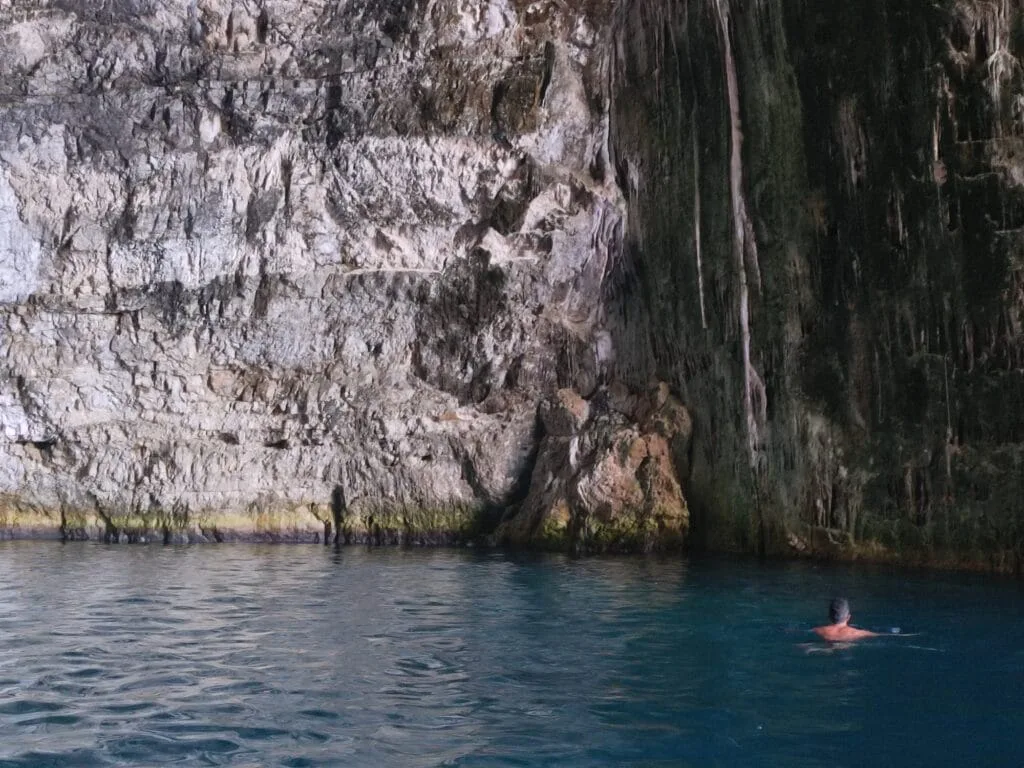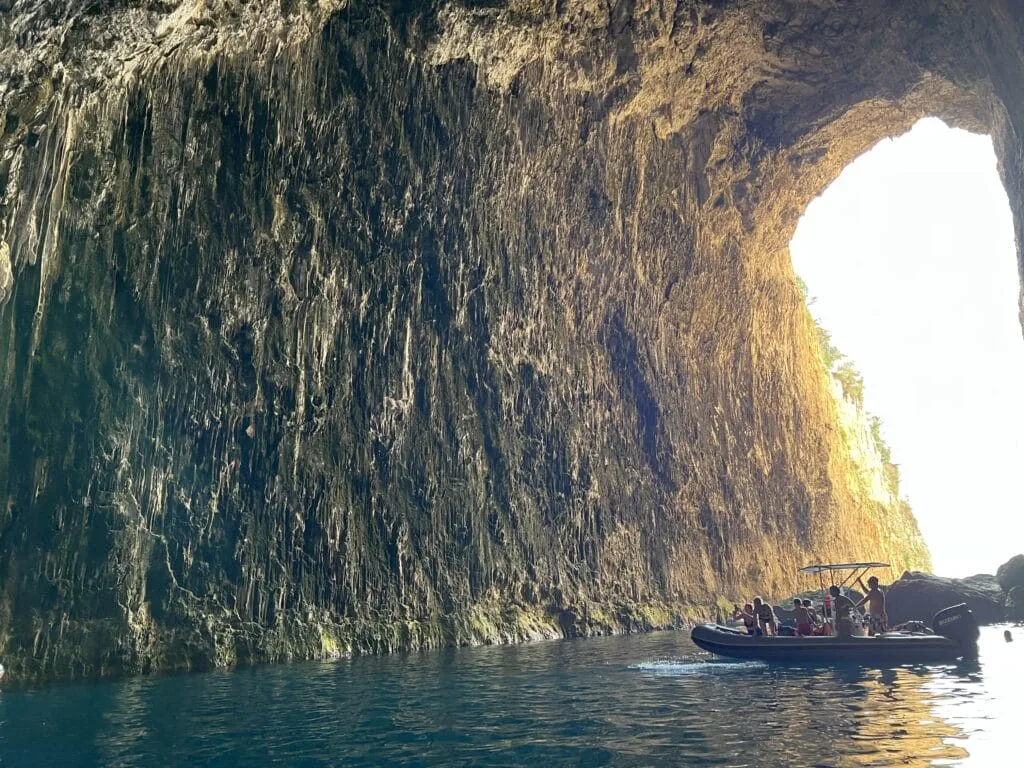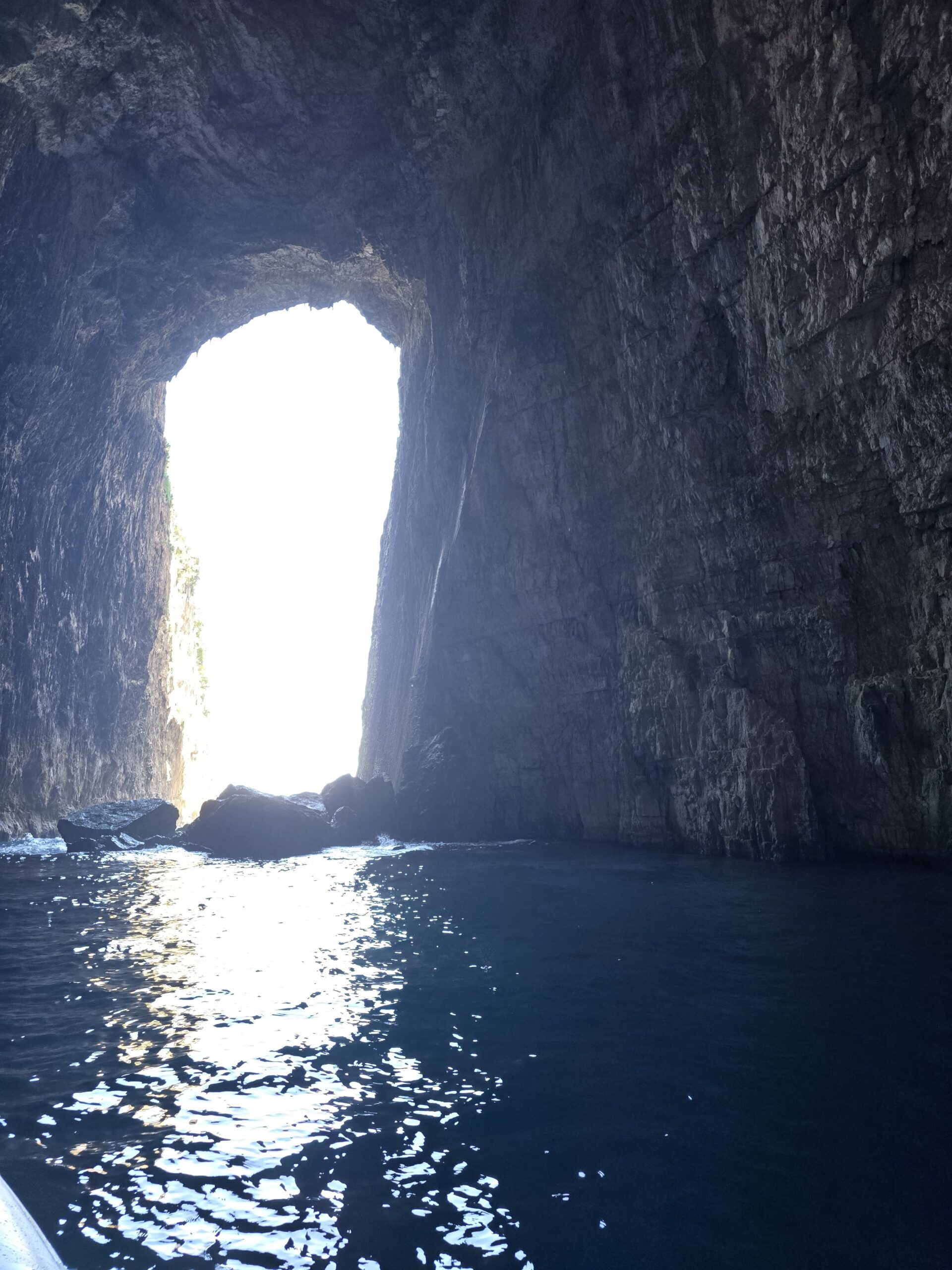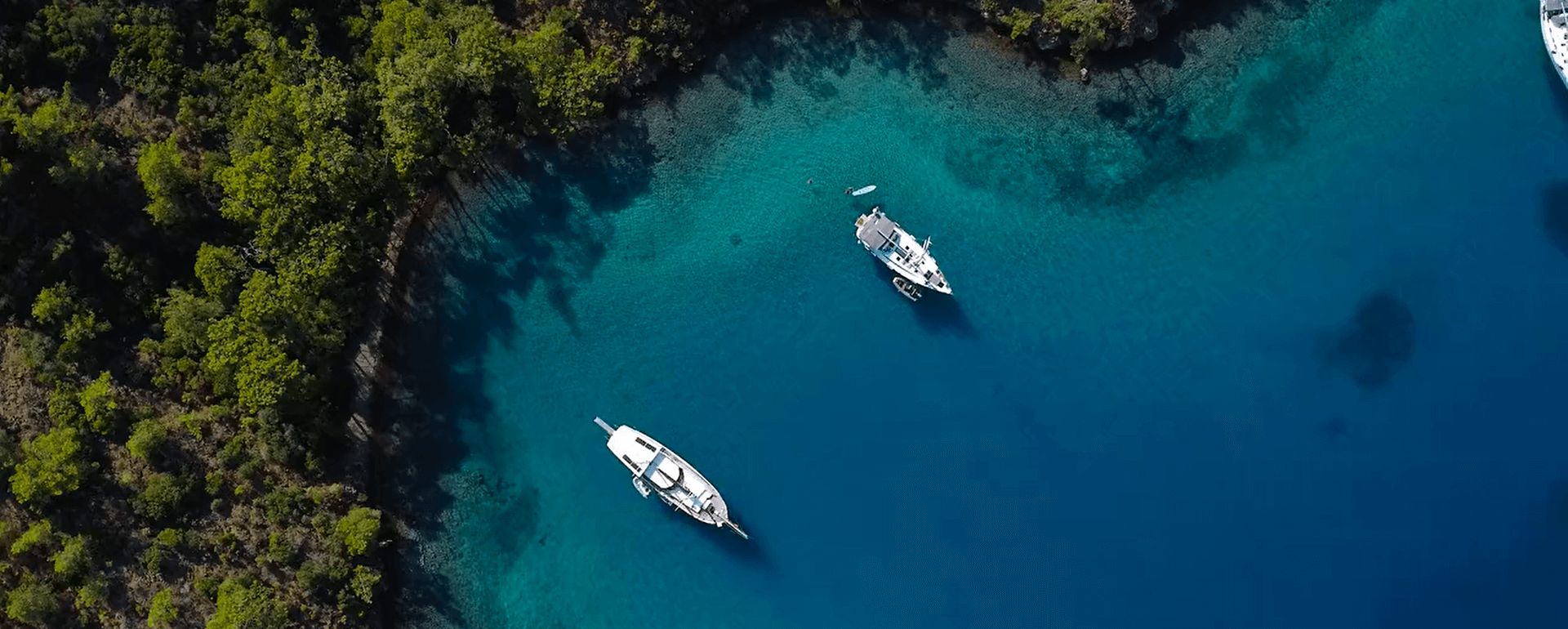Enjoy The Best
Exploring Haxhi Ali Cave in the Karaburun Peninsula
Albania, renowned for its breathtaking natural beauty, is home to many hidden gems—one of the most remarkable being Haxhi Ali Cave. Nestled in the Karaburun Peninsula, just off the coast of Vlora, this stunning sea cave offers a unique blend of natural wonder and historical intrigue.
Visitors are captivated by its crystal-clear waters, dramatic limestone formations, and the sense of stepping back in time. Whether you're drawn by the cave's fascinating history or its raw, untouched beauty, a visit to Haxhi Ali Cave is an unforgettable experience for adventurers and nature lovers alike.
A Geological Wonder
Haxhi Ali Cave is a remarkable limestone formation, shaped by natural forces over millions of years. Stretching approximately 80 meters in length, the cave showcases intricate stalactites and stalagmites that have fascinated explorers, scientists, and nature lovers alike.
Though its exact age is still debated, geologists believe the cave dates back to the Paleozoic era. These ancient rock formations offer a rare glimpse into the Earth's deep geological history, making the cave a must-visit destination for archaeologists, geologists, and curious travelers seeking to connect with the past.

Cave Exploration and Tourism
In recent years, tourism to Haxhi Ali Cave has grown steadily, attracting visitors drawn to its mystical charm and natural beauty. Accessible only by boat, the trip to the cave is an adventure in itself, offering scenic views along the Albanian Riviera. Inside, guided tours lead explorers through its winding passages, where each corner reveals stunning rock formations and hidden wonders. Visitors are encouraged to follow safety protocols and help protect the cave’s fragile ecosystem for future generations.

Boat Trip to Haxhi Ali Cave
To reach the stunning Haxhi Ali Cave in Vlore, Albania, visitors embark on a scenic boat trip from the city to the Karaburun Peninsula. Nestled along the peninsula’s rugged coastline, the cave is a highlight of this maritime journey. Argo Boat Trip offers affordable excursions that include stops at the cave, allowing travelers to enjoy breathtaking views of the Albanian Riviera along the way.
For those seeking adventure, a swim in the cave’s emerald-green waters is a must. The refreshing temperature makes it an ideal spot to cool off, and with snorkeling gear in hand, you can discover a vibrant underwater world teeming with marine life.
Though its exact age is still debated, geologists believe the cave dates back to the Paleozoic era. These ancient rock formations offer a rare glimpse into the Earth's deep geological history, making the cave a must-visit destination for archaeologists, geologists, and curious travelers seeking to connect with the past.

History Of Haxhi Ali
Haxhi Ali Cave is named after the legendary Albanian sailor and warrior Haxhi Aliu, who sought refuge here with his son in the early 17th century. Originally known as the Illyrian Cave, it holds deep historical and cultural significance, with archaeological discoveries suggesting its use by ancient traders and travelers. Among the artifacts found inside are a 2nd-century BC amphora and a modern-era anchor, revealing the cave’s longstanding connection to maritime activity. Historians note the cave’s strategic importance, with its entrance reaching nearly 60 meters in height and its interior lined with the nests of wild pigeons. A mysterious tunnel extends into the rock, sparking curiosity—does it lead to another part of Karaburun? Haxhi Aliu used the cave as a fortified shelter while defending the coast from invading ships and pirates who threatened the Gulf of Vlora and the Karaburun region. According to local legend, every time old Albanian sailors passed by the cave, they would toss a bottle of olive oil and a piece of bread into the sea to honor his soul. Interestingly, between 1540 and 1545, the cave also served as a hideout for French pirates, a fact reflected in some of the surrounding place names to this day.

EXCELLENTTrustindex verifies that the original source of the review is Google. Trustindex verifies that the original source of the review is Google. Trustindex verifies that the original source of the review is Google. Trustindex verifies that the original source of the review is Google. Trustindex verifies that the original source of the review is Google. Trustindex verifies that the original source of the review is Google. Trustindex verifies that the original source of the review is Google. Trustindex verifies that the original source of the review is Google. Trustindex verifies that the original source of the review is Google. Trustindex verifies that the original source of the review is Google. Verified by TrustindexTrustindex verified badge is the Universal Symbol of Trust. Only the greatest companies can get the verified badge who has a review score above 4.5, based on customer reviews over the past 12 months. Read more


